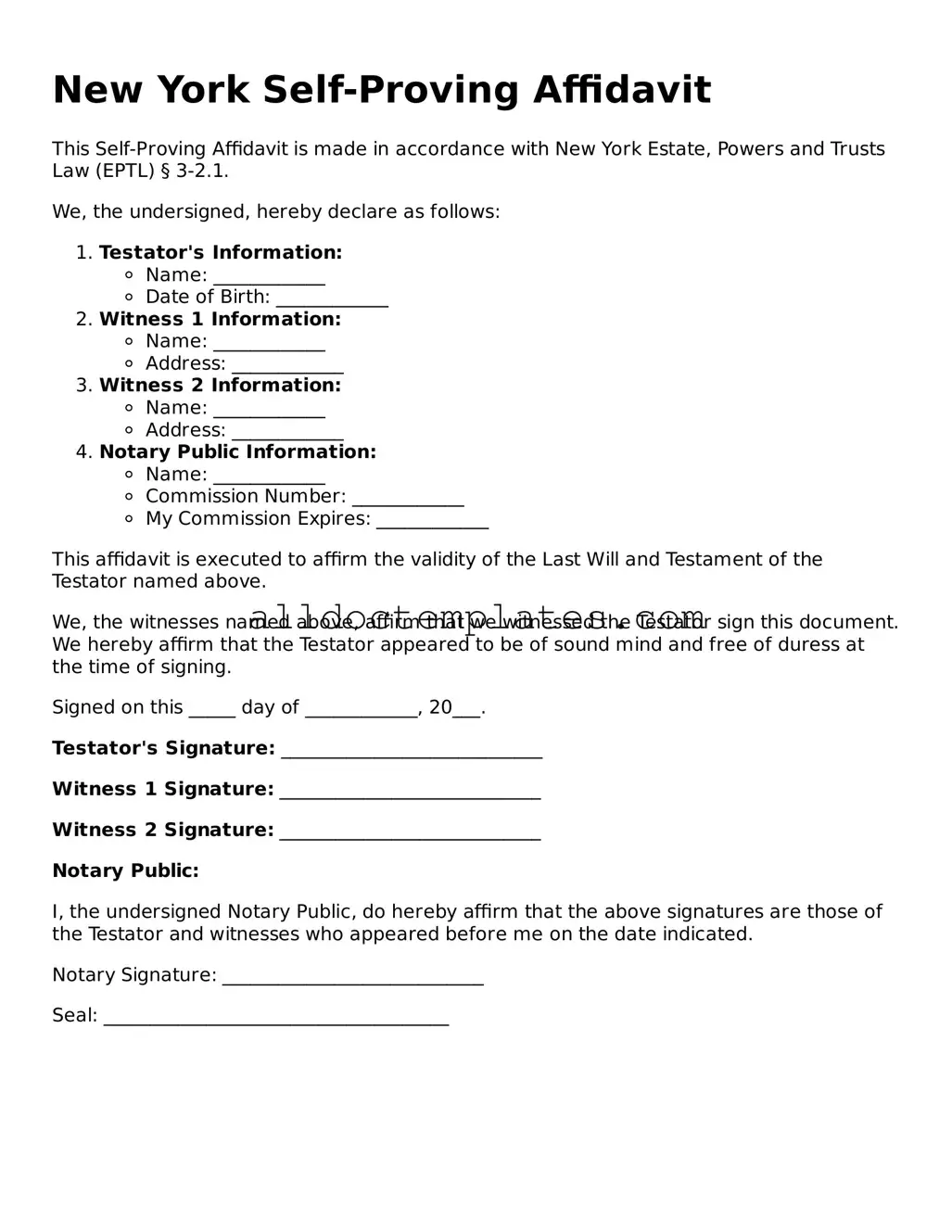New York Self-Proving Affidavit
This Self-Proving Affidavit is made in accordance with New York Estate, Powers and Trusts Law (EPTL) § 3-2.1.
We, the undersigned, hereby declare as follows:
- Testator's Information:
- Name: ____________
- Date of Birth: ____________
- Witness 1 Information:
- Name: ____________
- Address: ____________
- Witness 2 Information:
- Name: ____________
- Address: ____________
- Notary Public Information:
- Name: ____________
- Commission Number: ____________
- My Commission Expires: ____________
This affidavit is executed to affirm the validity of the Last Will and Testament of the Testator named above.
We, the witnesses named above, affirm that we witnessed the Testator sign this document. We hereby affirm that the Testator appeared to be of sound mind and free of duress at the time of signing.
Signed on this _____ day of ____________, 20___.
Testator's Signature: ____________________________
Witness 1 Signature: ____________________________
Witness 2 Signature: ____________________________
Notary Public:
I, the undersigned Notary Public, do hereby affirm that the above signatures are those of the Testator and witnesses who appeared before me on the date indicated.
Notary Signature: ____________________________
Seal: _____________________________________
